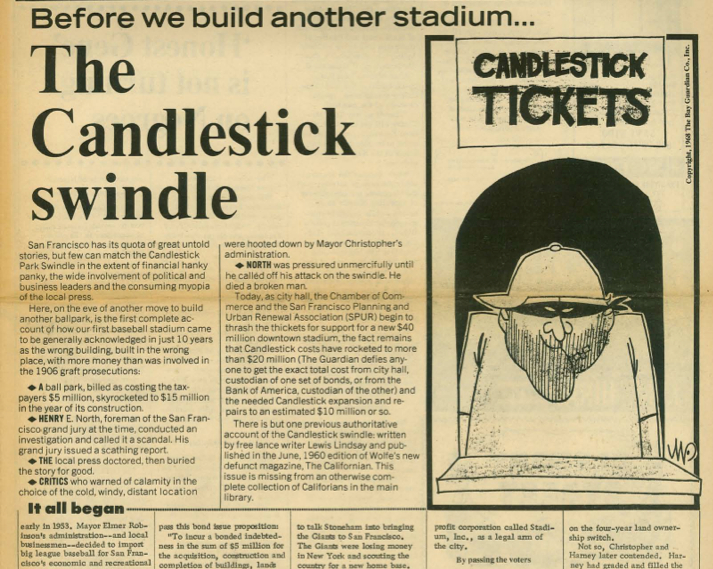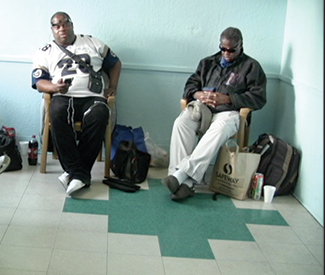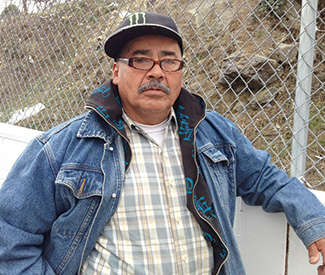WEDNESDAY 4
ROCK
Bottom of the Hill: 1233 17th St., San Francisco. Odd Owl, James Leste, Andrew Blair & Graham Patzner, Ghost Parade, 9 p.m., $8.
El Rio: 3158 Mission, San Francisco. Alabaster & The Original Bastards, Devon McClive & Sons, Tall Fires, 8 p.m., $10.
Hemlock Tavern: 1131 Polk, San Francisco. Sea Knight, Moon Honey, Build Them to Break, 8:30 p.m., $6.
Milk Bar: 1840 Haight, San Francisco. Vandella, Lee Gallagher & the Hallelujah, Fritz Montana, 8:30 p.m., $5.
Rickshaw Stop: 155 Fell, San Francisco. Crash Kings, The Struts, King Washington, 8 p.m., $10.
DANCE
The Cafe: 2369 Market, San Francisco. “Sticky Wednesdays,” w/ DJ Mark Andrus, 8 p.m., free.
Cat Club: 1190 Folsom, San Francisco. “Bondage A Go Go,” w/ DJs Damon, Tomas Diablo, & guests, 9:30 p.m., $5-$10.
Club X: 715 Harrison, San Francisco. “Electro Pop Rocks,” 18+ dance night with Terravita, 9 p.m.
The EndUp: 401 Sixth St., San Francisco. “Tainted Techno Trance,” 10 p.m.
F8: 1192 Folsom St., San Francisco. “Housepitality,” 9 p.m., $5-$10.
Harlot: 46 Minna, San Francisco. “Qoöl,” 5 p.m.
Infusion Lounge: 124 Ellis, San Francisco. “Indulgence,” 10 p.m.
Lookout: 3600 16th St., San Francisco. “What?,” w/ resident DJ Tisdale and guests, 7 p.m., free.
Madrone Art Bar: 500 Divisadero, San Francisco. “Rock the Spot,” 9 p.m., free.
MatrixFillmore: 3138 Fillmore, San Francisco. “Reload,” w/ DJ Big Bad Bruce, 10 p.m., free.
Q Bar: 456 Castro, San Francisco. “Booty Call,” w/ Juanita More, Joshua J, guests, 9 p.m., $3.
HIP-HOP
Skylark Bar: 3089 16th St., San Francisco. “Mixtape Wednesday,” w/ resident DJs Strategy, Junot, Herb Digs, & guests, 9 p.m., $5.
ACOUSTIC
Bazaar Cafe: 5927 California, San Francisco. Kapali Long, 7 p.m.
Cafe Divine: 1600 Stockton, San Francisco. Craig Ventresco & Meredith Axelrod, 7 p.m., free.
Cafe Du Nord: 2170 Market, San Francisco. The Gundersen Family Holiday Special featuring Le Wrens, 8 p.m., $10-$12.
The Chapel: 777 Valencia St., San Francisco. Brendan Canning, Holly Miranda, 8 p.m., $15.
Club Deluxe: 1511 Haight, San Francisco. Happy Hour Bluegrass, 6:30 p.m., free.
Fiddler’s Green: 1333 Columbus, San Francisco. Terry Savastano, Every other Wednesday, 9:30 p.m., free/donation.
Hotel Utah: 500 Fourth St., San Francisco. Jamie Kent, Cyndi Harvell, 8 p.m., $10.
Plough & Stars: 116 Clement, San Francisco. Jeanie & Chuck’s Bluegrass Country Jam, First Wednesday of every month, 9 p.m., free.
JAZZ
Amnesia: 853 Valencia, San Francisco. Gaucho, Eric Garland’s Jazz Session, The Amnesiacs, 7 p.m., free.
Burritt Room: 417 Stockton St., San Francisco. Terry Disley’s Rocking Jazz Trio, 6 p.m., free.
Jazz Bistro at Les Joulins: 44 Ellis, San Francisco. Charles Unger Experience, 7:30 p.m., free.
Revolution Cafe: 3248 22nd St., San Francisco. Michael Parsons Trio, Every other Wednesday, 8:30 p.m., free/donation.
Savanna Jazz Club: 2937 Mission, San Francisco. “Cat’s Corner,” 9 p.m., $10.
Top of the Mark: One Nob Hill, 999 California, San Francisco. Ricardo Scales, Wednesdays, 6:30-11:30 p.m., $5.
Yoshi’s San Francisco: 1330 Fillmore, San Francisco. The Wee Trio, 8 p.m., $17-$21.
Zingari: 501 Post, San Francisco. Anne O’Brien, First Wednesday of every month, 7:30 p.m., free.
INTERNATIONAL
Bissap Baobab: 3372 19th St., San Francisco. Timba Dance Party, w/ DJ WaltDigz, 10 p.m., $5.
Boom Boom Room: 1601 Fillmore, San Francisco. Cha-Ching, First Wednesday of every month, 9 p.m., $5.
Cafe Cocomo: 650 Indiana, San Francisco. “Bachatalicious,” w/ DJs Good Sho & Rodney, 7 p.m., $5-$10.
Pachamama Restaurant: 1630 Powell, San Francisco. Aguabella, 8 p.m., $10-$12.
Pier 23 Cafe: Pier 23, San Francisco. David Correa & Cascada, 6 p.m., free.
BLUES
Biscuits and Blues: 401 Mason, San Francisco. Chris Cain, 7:30 & 9:30 p.m., $20.
SOUL
Lexington Club: 3464 19th St., San Francisco. “Secret Lovers,” w/ DJs Ponyboy, Lil MC, Katie Duck, and Durt, First Wednesday of every month, 9 p.m., free.
THURSDAY 5
ROCK
Brick & Mortar Music Hall: 1710 Mission, San Francisco. Guy Fox, Bonnie & The Bang Bang, Growwler, Benefit show for Public Arts Workshop., 9 p.m., $7-$10.
The Chapel: 777 Valencia St., San Francisco. Escondido, Young Moon, 8 p.m., $12-$15.
S.F. Eagle: 398 12th St., San Francisco. The Intelligence, Dylan Shearer, 9 p.m.
Hemlock Tavern: 1131 Polk, San Francisco. The New Mummies, Books on Fate, Kristian Rodriguez, 8:30 p.m., $5.
The Independent: 628 Divisadero, San Francisco. The Long Winters, Sean Nelson, 8 p.m., $15.
The Knockout: 3223 Mission, San Francisco. Cash Pony, Surplus 1980, BreakArts, 9 p.m.
Mezzanine: 444 Jessie, San Francisco. “Club NSSN,” w/ Portugal. The Man, Chvrches, NoNoNo, The Colourist, Aaron Axelsen, Miles the DJ, 7:30 p.m., $30.
Milk Bar: 1840 Haight, San Francisco. Li Xi, Little Sister, Momotaro, Mashi Mashi, 8:30 p.m., $5.
Red Devil Lounge: 1695 Polk, San Francisco. Dishwalla, Oceanroyal, 9 p.m., $15-$20.
Rickshaw Stop: 155 Fell, San Francisco. Penguin Prison (DJ set), Double Duchess, The Frail, DJ Nick Williams, 9 p.m., $15.
Thee Parkside: 1600 17th St., San Francisco. Rock Bottom, Chrome Eagle, Sweet Chariot, Cop Out, 9 p.m., $5.
DANCE
1015 Folsom: 1015 Folsom St., San Francisco. “A Light in the Attic,” w/ Kaminanda, Kalya Scintilla, Birds of Paradies, Alia, Kitty-D, VNDMG, Balance, Boats, more, 10 p.m., $10 advance.
Abbey Tavern: 4100 Geary, San Francisco. DJ Schrobi-Girl, 10 p.m., free.
Audio Discotech: 316 11th St., San Francisco. “Phonic,” w/ Designer Drugs, Non Sequitur, 9:30 p.m., $10 advance.
Aunt Charlie’s Lounge: 133 Turk, San Francisco. “Tubesteak Connection,” w/ DJ Bus Station John, 9 p.m., $5-$7.
Cafe Du Nord: 2170 Market, San Francisco. Hi Fashion, Bright Light Bright Light, 8 p.m., $10-$12.
The Cafe: 2369 Market, San Francisco. “¡Pan Dulce!,” 9 p.m., $5.
Cat Club: 1190 Folsom, San Francisco. “Throwback Thursdays,” ‘80s night with DJs Damon, Steve Washington, Dangerous Dan, and guests, 9 p.m., $6 (free before 9:30 p.m.).
The Cellar: 685 Sutter, San Francisco. “XO,” w/ DJs Astro & Rose, 10 p.m., $5.
Club X: 715 Harrison, San Francisco. “The Crib,” 9:30 p.m., $10, 18+.
Elbo Room: 647 Valencia, San Francisco. “Afrolicious,” w/ DJs Pleasuremaker, Señor Oz, and live guests, 9:30 p.m., $5-$8.
Infusion Lounge: 124 Ellis, San Francisco. “I Love Thursdays,” 10 p.m., $10.
Lookout: 3600 16th St., San Francisco. “Fluff: A Queer Night of House,” w/ DJs Sissyslap & Dr. Sleep, First Thursday of every month, 9 p.m., $3.
Madrone Art Bar: 500 Divisadero, San Francisco. “Night Fever,” 9 p.m., $5 after 10 p.m.
Pork Store Cafe: 3122 16th St., San Francisco. “Back & Forth,” w/ Ryury & Mr. Rise, 10 p.m., free.
Public Works: 161 Erie, San Francisco. “Black Magic Disko,” w/ Trickski, Shiny Objects, Trev Campbell, Hi-Tem (in the OddJob Loft), 9 p.m., $10-$15.
Q Bar: 456 Castro, San Francisco. “Throwback Thursday,” w/ DJ Jay-R, 9 p.m., free.
Raven: 1151 Folsom St., San Francisco. “1999,” w/ VJ Mark Andrus, 8 p.m., free.
The Tunnel Top: 601 Bush, San Francisco. “Tunneltop,” DJs Avalon and Derek ease you into the weekend with a cool and relaxed selection of tunes spun on vinyl, 10 p.m., free.
Underground SF: 424 Haight, San Francisco. “Bubble,” 10 p.m., free.
Vessel: 85 Campton, San Francisco. “Base,” w/ Tone of Arc, Ean Golden, 10 p.m., $5-$10.
HIP-HOP
Eastside West: 3154 Fillmore, San Francisco. “Throwback Thursdays,” w/ DJ Madison, 9 p.m., free.
The EndUp: 401 Sixth St., San Francisco. “Cypher,” w/ resident DJ Big Von, 10 p.m., $5-$10.
John Colins: 138 Minna, San Francisco. “The Premiere,” video hip-hop party with VDJ T.D. Camp, First Thursday of every month, 9 p.m., $5.
Skylark Bar: 3089 16th St., San Francisco. “Peaches,” w/lady DJs DeeAndroid, Lady Fingaz, That Girl, Umami, Inkfat, and Andre, 10 p.m., free.
Yoshi’s San Francisco: 1330 Fillmore, San Francisco. KRS-One, Duckwrth, 10:30 p.m., $25.
ACOUSTIC
Amnesia: 853 Valencia, San Francisco. Misisipi Mike & The Midnight Gamblers, Mipso, 9 p.m., $7.
Bazaar Cafe: 5927 California, San Francisco. Acoustic Open Mic, 7 p.m.
Hotel Utah: 500 Fourth St., San Francisco. Highway Hymns, Willy Tea Taylor, Jason Eady, 9 p.m., $10.
The Lost Church: 65 Capp St., San Francisco. Mr. Andrew, J.J. Schultz, 8 p.m., $10.
Musicians Union Local 6: 116 Ninth St., San Francisco. San Francisco Singer-Songwriters’ Workshop, hosted by Robin Yukiko, First Thursday of every month, 6:30 p.m., $25 (free for AFM members).
Plough & Stars: 116 Clement, San Francisco. The Shannon Céilí Band, First Thursday of every month, 9 p.m., free.
Slim’s: 333 11th St., San Francisco. Gaby Moreno, David Garza, Cazadero, Irene Diaz, 8 p.m., $15.
Swedish American Hall: 2174 Market, San Francisco. Kaki King, Jerome Holloway, 8 p.m., $15-$17.
JAZZ
Blush! Wine Bar: 476 Castro, San Francisco. Doug Martin’s Avatar Ensemble, 7:30 p.m., free.
Bottle Cap: 1707 Powell, San Francisco. The North Beach Sound with Ned Boynton, Jordan Samuels, and Tom Vickers, 7 p.m., free.
Cigar Bar & Grill: 850 Montgomery, San Francisco. Jimmy Grant Quartet, First Thursday of every month, 8 p.m., free.
Jazz Bistro at Les Joulins: 44 Ellis, San Francisco. Eugene Pliner Quartet with Tod Dickow, First and Third Thursday of every month, 7:30 p.m., free.
Pier 23 Cafe: Pier 23, San Francisco. Dick Fregulia Band, 7 p.m., free.
Savanna Jazz Club: 2937 Mission, San Francisco. Savanna Jazz Jam with Eddy Ramirez, 7:30 p.m., $5.
Top of the Mark: One Nob Hill, 999 California, San Francisco. Stompy Jones, 7:30 p.m., $10.
Yoshi’s San Francisco: 1330 Fillmore, San Francisco. NaJe, in Yoshi’s lounge, First Thursday of every month, 6:30 p.m., free; Aga Zaryan: “Remembering Nina & Abbey,” 8 p.m., $19-$25.
Zingari: 501 Post, San Francisco. Barbara Ochoa, 7:30 p.m., free.
INTERNATIONAL
Bissap Baobab: 3372 19th St., San Francisco. “Pa’Lante!,” w/ Juan G, El Kool Kyle, Mr. Lucky, 10 p.m., $5.
Pachamama Restaurant: 1630 Powell, San Francisco. “Jueves Flamencos,” 8 p.m., free.
Red Poppy Art House: 2698 Folsom, San Francisco. The Nightingale Trio, Tre Sisters, 7:30 p.m., $10-$15.
Sheba Piano Lounge: 1419 Fillmore, San Francisco. Gary Flores & Descarga Caliente, 8 p.m.
Verdi Club: 2424 Mariposa, San Francisco. The Verdi Club Milonga, w/ Christy Coté, DJ Emilio Flores, guests, 9 p.m., $10-$15.
REGGAE
Neck of the Woods: 406 Clement St., San Francisco. Natural Vibrations, Native Elements, on the upstairs stage, 9 p.m., $15-$20.
Pissed Off Pete’s: 4528 Mission St., San Francisco. Reggae Thursdays, w/ resident DJ Jah Yzer, 9 p.m., free.
BLUES
50 Mason Social House: 50 Mason, San Francisco. Bill Phillippe, 5:30 p.m., free.
Biscuits and Blues: 401 Mason, San Francisco. Greg Nagy, 8 & 10 p.m., $18.
The Saloon: 1232 Grant, San Francisco. Chris Ford, First Thursday of every month, 4 p.m.
COUNTRY
The Parlor: 2801 Leavenworth, San Francisco. “Twang Honky Tonk & Country Jamboree,” w/ DJ Little Red Rodeo, 7 p.m., free.
EXPERIMENTAL
The Luggage Store: 1007 Market, San Francisco. Cartoon Justice, The Pascucci-Oppenheim Duo, Cloud Shepherd, 8 p.m., $6-$10.
SOUL
Boom Boom Room: 1601 Fillmore, San Francisco. West Grand Boulevard, 9:30 p.m., $5.
FRIDAY 6
ROCK
50 Mason Social House: 50 Mason, San Francisco. Turn Me On Dead, Staring@Stars, Mary Jones’ Lights, Ultra Violent Rays, Waiting Room, 8 p.m.
Amoeba Music: 1855 Haight, San Francisco. Toad the Wet Sprocket, 6 p.m., free.
The Chapel: 777 Valencia St., San Francisco. Patterson Hood, 9 p.m., $22-$25.
DNA Lounge: 375 11th St., San Francisco. Everything Goes Cold, Sorrow Church, Roadside Memorial, DJ Decay, Crashfaster, 9 p.m., $8-$13.
El Rio: 3158 Mission, San Francisco. Friday Live: Boats!, DJ Emotions, 10 p.m., free.
Hemlock Tavern: 1131 Polk, San Francisco. Steel Cranes, Oceanography, Turtle Rising, 9:30 p.m., $6.
Milk Bar: 1840 Haight, San Francisco. High Cliffs, The Wave Commission, Little Smoke, 9 p.m., $8.
Slim’s: 333 11th St., San Francisco. The Aquabats, Kepi Ghoulie, Mike Park, 8 p.m., $20.
Yoshi’s San Francisco: 1330 Fillmore, San Francisco. The Tubes, 10:30 p.m., $29-$33.
DANCE
1015 Folsom: 1015 Folsom St., San Francisco. Oliver, Classixx, Shy Girls, Lando Kal, Richie Panic, J-Boogie, DeeJay Theory, Justin Milla, Shawn Steele, 10 p.m., $17.50 advance.
Amnesia: 853 Valencia, San Francisco. “Brass Tax,” w/ resident DJs JoeJoe, Ding Dong, Ernie Trevino, Mace, First Friday of every month, 10 p.m., $5.
Audio Discotech: 316 11th St., San Francisco. Nitin, Silky, J. Remy, 9:30 p.m., $10 advance.
Cafe Flore: 2298 Market, San Francisco. “Kinky Beats,” w/ DJ Sergio, 10 p.m., free.
The Cafe: 2369 Market, San Francisco. “Boy Bar,” w/ DJ Matt Consola, 9 p.m., $5.
Cat Club: 1190 Folsom, San Francisco. “Strangelove: Germany Calling,” w/ DJs Tomas Diablo, Joe Radio, Xander, and Unit 77, 9:30 p.m., $7 ($3 before 10 p.m.).
The Cellar: 685 Sutter, San Francisco. “F.T.S.: For the Story,” 10 p.m.
The EndUp: 401 Sixth St., San Francisco. “Fever,” 10 p.m., free before midnight.
The Grand Nightclub: 520 4th St., San Francisco. “We Rock Fridays,” 9:30 p.m.
Infusion Lounge: 124 Ellis, San Francisco. “Escape Fridays,” 10 p.m., $20.
Lookout: 3600 16th St., San Francisco. “HYSL,” 9 p.m., $3.
Madrone Art Bar: 500 Divisadero, San Francisco. “Dirty Rotten Dance Party,” w/ Kap10 Harris, Shane King, guests, First Friday of every month, 9 p.m., $5.
Manor West: 750 Harrison, San Francisco. “Fortune Fridays,” 10 p.m., free before 11 p.m. with RSVP.
MatrixFillmore: 3138 Fillmore, San Francisco. “F-Style Fridays,” w/ DJ Jared-F, 9 p.m.
Mighty: 119 Utah, San Francisco. “Throwback,” Mighty 10-year anniversary party with DJ Rooz, Tyrel Williams, Miguel Solari, Jayvi Velasco, Lance DeSardi, DJ Gunz, Ren the Vinyl Archaeologist, 9 p.m., free before midnight with RSVP.
Monarch: 101 6th St., San Francisco. “As You Like It,” w/ George FitzGerald, J.Phlip, Galen, Bells & Whistles, 9 p.m., $15-$20 advance.
OMG: 43 6th St., San Francisco. “Release,” 9 p.m., free before 11 p.m.
Powerhouse: 1347 Folsom, San Francisco. “Nasty,” First Friday of every month, 10 p.m., $5.
Public Works: 161 Erie, San Francisco. “Haçeteria,” w/ Cherushii, Glenn Jackson, Ben Deploy, Jason P, Smac, Tristes Tropiques, and Nihar, 9 p.m., $5-$10.
Q Bar: 456 Castro, San Francisco. “Pump: Worq It Out Fridays,” w/ resident DJ Christopher B, 9 p.m., $3.
Rickshaw Stop: 155 Fell, San Francisco. Trapeze X, Featuring music by DJs Delachaux, The Klown, and The Speakeasy Syndicate, plus burlesque by Vienna La Rouge, Kara La Fleur, Fou Fou Ha, and Ze SexBombe Danzeurs., 9 p.m., $10-$15.
Underground SF: 424 Haight, San Francisco. “Bionic,” 10 p.m., $5.
Wish: 1539 Folsom, San Francisco. “Bridge the Gap,” w/ resident DJ Don Kainoa, Fridays, 6-10 p.m., free; “Depth,” w/ resident DJs Sharon Buck & Greg Yuen, First Friday of every month, 10 p.m., free.
HIP-HOP
Brick & Mortar Music Hall: 1710 Mission, San Francisco. Nate the Great, The Kid Rated R, Supreme, plus DJs West Kraven, Beatknoxx, and Okeefe, 9 p.m., $10.
Elbo Room: 647 Valencia, San Francisco. “Swagger Like Us,” w/ Cakes Da Killa, Queens D. Light, plus DJs Lady Ryan, DavO, and Boyfriend, 10 p.m., $8.
EZ5: 682 Commercial, San Francisco. “Decompression,” Fridays, 5-9 p.m.
F8: 1192 Folsom St., San Francisco. “Some Type of Way,” w/ MicahTron, Nanosaur, Sean G, Kool Karlo, Roost Uno, 9 p.m., $9.99 (free before 11 p.m.).
Nickies: 466 Haight, San Francisco. “First Fridays,” w/ The Whooligan & Dion Decibels, First Friday of every month, 11 p.m., free.
Public Works: 161 Erie, San Francisco. Big K.R.I.T. (DJ set), DJ D-Sharp, 9 p.m., $10 advance.
Slate Bar: 2925 16th St., San Francisco. “Remix,” w/ Lando 1, 9:30 p.m.
ACOUSTIC
Atlas Cafe: 3049 20th St., San Francisco. Zach Hing, 7:30 p.m., free.
Dolores Park Cafe: 501 Dolores, San Francisco. StringQuake, 7:30 p.m.
Hotel Utah: 500 Fourth St., San Francisco. Danielia Cotton, RonDre., Venetia Pristavec, Johnny Marnell, 9 p.m., $8-$10.
Plough & Stars: 116 Clement, San Francisco. Avery County, 9 p.m.
The Sports Basement: 610 Old Mason, San Francisco. “Breakfast with Enzo,” w/ Enzo Garcia, 10 a.m., $5.
St. Cyprian’s Episcopal Church: 2097 Turk, San Francisco. First Fridays Song Circle, First Friday of every month, 7 p.m., $5-$10; Alasdair Fraser & Natalie Haas, 8 p.m., $19-$22.
Yoshi’s San Francisco: 1330 Fillmore, San Francisco. An Acoustic Evening with Al Stewart, 8 p.m., $24-$28.
JAZZ
Beach Chalet Brewery & Restaurant: 1000 Great Highway, San Francisco. Johnny Smith, 8 p.m., free.
Bird & Beckett: 653 Chenery, San Francisco. Don Prell’s SeaBop Ensemble, First Friday of every month, 5:30 p.m., free.
Cafe Royale: 800 Post, San Francisco. Wrapped in Plastic, First Friday of every month, 9 p.m.
Center for New Music: 55 Taylor St., San Francisco. Festivus 2013: Night One, w/ Rent Romus’ Life’s Blood, Adam Shulman & Katy Stephan, The Klaxon Mutant Allstars, Patrick Cress’ Telepathy, 7 p.m., $8-$10.
Cliff House: 1090 Point Lobos, San Francisco. John Kalleen Group, 7 p.m.
Jazz Bistro at Les Joulins: 44 Ellis, San Francisco. Charles Unger Experience, 7:30 p.m., free.
The Palace Hotel: 2 New Montgomery, San Francisco. The Klipptones, 8 p.m., free.
Savanna Jazz Club: 2937 Mission, San Francisco. Savanna Jazz Trio, 7 p.m., $8.
SFJAZZ Center: 205 Franklin St., San Francisco. Giulia Valle, 7 & 8:30 p.m., $15-$20.
Top of the Mark: One Nob Hill, 999 California, San Francisco. Black Market Jazz Orchestra, 9 p.m., $10.
Zingari: 501 Post, San Francisco. Joyce Grant, 8 p.m., free.
INTERNATIONAL
Bissap Baobab: 3372 19th St., San Francisco. “Paris-Dakar African Mix Coupe Decale,” 10 p.m., $5.
Cafe Cocomo: 650 Indiana, San Francisco. Taste Fridays, featuring local cuisine tastings, salsa bands, dance lessons, and more, 7:30 p.m., $15 (free entry to patio).
Croatian American Cultural Center: 60 Onondaga, San Francisco. “Beyond the Borders,” w/ Galbeno Band, 8 p.m., $15.
Pachamama Restaurant: 1630 Powell, San Francisco. Cuban Night with Fito Reinoso, 7:30 & 9:15 p.m., $15-$18.
Red Poppy Art House: 2698 Folsom, San Francisco. Camille Mai Trio, Blind Willies, 7:30 p.m., $10-$20.
REGGAE
Gestalt Haus: 3159 16th St., San Francisco. “Music Like Dirt,” 7:30 p.m., free.
Showdown: 10 Sixth St., San Francisco. “How the West Was Won,” w/ Nowtime Sound, First Friday of every month, 10 p.m., free.
BLUES
Biscuits and Blues: 401 Mason, San Francisco. Greg Nagy, 8 & 10 p.m., $20.
Tupelo: 1337 Green St., San Francisco. Jinx Jones & The KingTones, First Friday of every month, 9 p.m.
COUNTRY
Thee Parkside: 1600 17th St., San Francisco. Eddie Spaghetti, The Gravel Spreaders, Benjamin Brown, 9 p.m., $10.
FUNK
Amnesia: 853 Valencia, San Francisco. Swoop Unit, First Friday of every month, 6 p.m., $3-$5.
The Independent: 628 Divisadero, San Francisco. Dragon Smoke (featuring Stanton Moore, Ivan Neville, Eric Lindell, and Robert Mercurio), Mike Dillon, DJ Matt Haze, 9 p.m., $35.
Make-Out Room: 3225 22nd St., San Francisco. “Loose Joints,” w/ DJs Centipede, Damon Bell, & Tom Thump, 10 p.m., $5.
SOUL
Edinburgh Castle: 950 Geary, San Francisco. “Soul Crush,” w/ DJ Serious Leisure, 10 p.m., free.
The Knockout: 3223 Mission, San Francisco. “Oldies Night,” w/ DJs Primo, Daniel, Lost Cat, friends, First Friday of every month, 10 p.m., $5.
SATURDAY 7
ROCK
50 Mason Social House: 50 Mason, San Francisco. Chronic Town, Gang of Forty, 9:30 p.m., $6.
Bender’s: 806 S. Van Ness, San Francisco. Swiftumz, Violent Change, Tony Molina, 10 p.m., $5.
Boom Boom Room: 1601 Fillmore, San Francisco. Roem & The Revival, Kingsborough, Steven Roth Band, 9:30 p.m., $10.
Bottom of the Hill: 1233 17th St., San Francisco. The Flatliners, Living with Lions, Culture Abuse, 9:30 p.m., $12-$15.
Cafe Du Nord: 2170 Market, San Francisco. The Hundred Days, Dangermaker, Bang Bang, Aaron Cuadra, 9 p.m., $8-$10.
El Rio: 3158 Mission, San Francisco. Vulturegeist, Secrets of the Sky, Broken Cities, 9 p.m., $6-$10.
Hemlock Tavern: 1131 Polk, San Francisco. Primitive Hearts, Big Tits, Adam Widener, The Shanghais, 9 p.m., $6.
Hotel Utah: 500 Fourth St., San Francisco. That Ghost, Golden Drugs, Dante Elephante, Crime Novels, 9 p.m., $8.
The Lost Church: 65 Capp St., San Francisco. Castles in Spain, The Unfortunate Bastard, Stella Royale, 8 p.m., $10.
Make-Out Room: 3225 22nd St., San Francisco. Benefit for Alan Forbes with Harderships, Hot Lunch, The Freeks, Ethan Miller, DJ Jello Biafra, 5 p.m., $10.
Milk Bar: 1840 Haight, San Francisco. The Bad Jones, Super Adventure Club, The Stages of Sleep, 9 p.m., $10.
Neck of the Woods: 406 Clement St., San Francisco. People Get Ready, The Trims, Conquistador, on the downstairs stage, 9 p.m., $12.
Slim’s: 333 11th St., San Francisco. The Mowgli’s, Blondfire, Hunter Hunted, 8 p.m., $16.
DANCE
Audio Discotech: 316 11th St., San Francisco. Bixel Boys, Tropicool, 9:30 p.m., $10 advance.
Cafe Flore: 2298 Market, San Francisco. “Bistrotheque,” w/ DJ Ken Vulsion, 8 p.m., free.
Cat Club: 1190 Folsom, San Francisco. “Leisure,” w/ DJs Aaron, Omar, & Jetset James, First Saturday of every month, 10 p.m., $7.
DNA Lounge: 375 11th St., San Francisco. Bootie S.F.: Hubba Hubba Revue Holiday Show, 9 p.m., $10-$15.
The EndUp: 401 Sixth St., San Francisco. “Play: 1-Year Anniversary Party,” w/ Danny Howells & Nikita, 10 p.m., $15-$20.
Harlot: 46 Minna, San Francisco. Lauren Lane, Bones, Troy Kurtz, Shae B, Burn Unit, 9 p.m., $10.
Infusion Lounge: 124 Ellis, San Francisco. “Volume,” First Saturday of every month, 10 p.m., $10-$20.
The Knockout: 3223 Mission, San Francisco. “Debaser,” w/ resident DJs EmDee, Jamie Jams, and Stab Master Arson, First Saturday of every month, 10 p.m., $5 (free before 11 p.m. if wearing flannel).
Lookout: 3600 16th St., San Francisco. “Bounce!,” 9 p.m., $3.
Madrone Art Bar: 500 Divisadero, San Francisco. “The Prince & Michael Experience,” w/ DJs Dave Paul & Jeff Harris, First Saturday of every month, 9 p.m., $5.
Mezzanine: 444 Jessie, San Francisco. “Wonder-Full S.F. X,” w/ DJ Spinna, Proof, Hakobo, King Most, 9 p.m., $25-$35.
Mighty: 119 Utah, San Francisco. Mighty 10-Year Anniversary, w/ 2manydjs, Eug, 9 p.m., $25 advance.
Monarch: 101 6th St., San Francisco. “Lights Down Low,” w/ Deniz Kurtel, Pictureplane, Tyrel Williams, Richie Panic, Marco de la Vega, 10 p.m., $15-$20.
Public Works: 161 Erie, San Francisco. Distrikt: Holidaze – The Koktail Edition, With DJ Kramer, John Early, and more., 9 p.m., $10-$15.
Q Bar: 456 Castro, San Francisco. “Homo Erectus,” w/ DJs MyKill & Dcnstrct, First Saturday of every month, 9 p.m., $5.
Ruby Skye: 420 Mason, San Francisco. Project 46, Carl Kennedy, 9 p.m., $20 advance.
The Stud: 399 Ninth St., San Francisco. “Go Bang!: Celebrating Five Years of Atomic Dancefloor Disco Action,” w/ DJs Ken Vulsion, Nicky B, Steve Fabus, and Sergio Fedasz, 9 p.m., $7 (free before 10 p.m.).
Temple: 540 Howard, San Francisco. D:Fuse, Tall Sasha, Vodka Soda, Ks Thant, Self Destrukt, Mr. Kitt, Jai Unda, Babymuah, 10 p.m., $20.
Underground SF: 424 Haight, San Francisco. “Push the Feeling,” w/ residents Yr Skull & Epicsauce DJs, First Saturday of every month, 9 p.m.
Vessel: 85 Campton, San Francisco. “Swank,” w/ Pheeko Dubfunk, DJ Nile, Lorentzo, 10 p.m., $10-$30.
HIP-HOP
John Colins: 138 Minna, San Francisco. “N.E.W.: Never Ending Weekend,” w/ DJ Jerry Ross, First Saturday of every month, 9 p.m., free before 11 p.m.
Slate Bar: 2925 16th St., San Francisco. “Touchy Feely,” w/ The Wild N Krazy Kids, First Saturday of every month, 10 p.m., $5 (free before 11 p.m.).
ACOUSTIC
Amoeba Music: 1855 Haight, San Francisco. Lissie, 3 p.m., free.
Atlas Cafe: 3049 20th St., San Francisco. Craig Ventresco & Meredith Axelrod, Saturdays, 4-6 p.m., free.
Bazaar Cafe: 5927 California, San Francisco. Jamie Purnell, 7 p.m.
Great Star Theater: 630 Jackson, San Francisco. One Man Band Extravaganza, w/ Jordan B. Wilson, 1 Man Banjo, Shovelman, The Slow Poisoner, Cello Joe, 8 p.m., $5.
The Independent: 628 Divisadero, San Francisco. Lissie, Kopecky Family Band, 9 p.m., $18-$20.
Plough & Stars: 116 Clement, San Francisco. “Americana Jukebox,” w/ The Naked Bootleggers, Kemo Sabe, 9 p.m., $6-$10.
Revolution Cafe: 3248 22nd St., San Francisco. Seth Augustus, First Saturday of every month, 9 p.m., free/donation.
The Riptide: 3639 Taraval, San Francisco. The Low Rollers, 9:30 p.m., free.
Swedish American Hall: 2174 Market, San Francisco. Pomplamoose, Steve Poltz, Griffin House, 8 p.m., $20-$25.
JAZZ
Amnesia: 853 Valencia, San Francisco. Broken Shadows Family Band, 6 p.m.
Center for New Music: 55 Taylor St., San Francisco. Festivus 2013: Night Two, w/ John Shiurba’s 5×5, Lisa Mezzacappa’s Bait & Switch, Noah Phillips, Michael Coleman’s Enjoyer, 7 p.m., $8-$10.
Jazz Bistro at Les Joulins: 44 Ellis, San Francisco. Bill “Doc” Webster & Jazz Nostalgia, 7:30 p.m., free.
Savanna Jazz Club: 2937 Mission, San Francisco. Savanna Jazz Trio, 7 p.m., $8.
SFJAZZ Center: 205 Franklin St., San Francisco. Giulia Valle, 7 & 8:30 p.m., $15-$20.
Sheba Piano Lounge: 1419 Fillmore, San Francisco. The Robert Stewart Experience, 9 p.m.
Yoshi’s San Francisco: 1330 Fillmore, San Francisco. Mike Stern Band featuring Randy Brecker, Anthony Jackson, and Keith Carlock, 8 & 10 p.m., $22-$28.
Zingari: 501 Post, San Francisco. Lisa Lindsley, 8 p.m., free.
INTERNATIONAL
1015 Folsom: 1015 Folsom St., San Francisco. “Pura,” 9 p.m., $20.
Amnesia: 853 Valencia, San Francisco. Fanfare Zambaleta, Broken Shadows Family Band, 9 p.m.
Bissap Baobab: 3372 19th St., San Francisco. “Paris-Dakar African Mix Coupe Decale,” 10 p.m., $5.
Make-Out Room: 3225 22nd St., San Francisco. “El SuperRitmo,” w/ DJs Roger Mas & El Kool Kyle, 10 p.m., $5.
Old First Presbyterian Church: 1751 Sacramento, San Francisco. Veretski Pass, 8 p.m., $14-$17.
Pachamama Restaurant: 1630 Powell, San Francisco. Peña Eddy Navia & Pachamama Band, 8 p.m., free.
Roccapulco Supper Club: 3140 Mission, San Francisco. Jowell & Randy, 8 p.m., $40 advance.
Space 550: 550 Barneveld, San Francisco. “Club Fuego,” 9:30 p.m.
REGGAE
Red Devil Lounge: 1695 Polk, San Francisco. One Drop, Midnight Raid, Dewey & The Peoples, 9 p.m., $10.
BLUES
Biscuits and Blues: 401 Mason, San Francisco. Karen Lovely, 7:30 & 10 p.m., $22.
AMERICANA
Plough & Stars: 116 Clement, San Francisco. “Americana Jukebox,” First Saturday of every month, 9 p.m., $6-$10.
FREE
Pier 23 Cafe: Pier 23, San Francisco. Danilo y Universal, 8 p.m., free.
SOUL
Brick & Mortar Music Hall: 1710 Mission, San Francisco. Kendra Morris, Binky Griptite, Jordan & The Ritual, DJ heyLove, 9 p.m., $12-$15.
El Rio: 3158 Mission, San Francisco. “Hard French,” w/ DJs Carnita & Brown Amy, First Saturday of every month, 2 p.m., $7.
Elbo Room: 647 Valencia, San Francisco. “Saturday Night Soul Party,” w/ DJs Lucky, Phengren Oswald, & Paul Paul, First Saturday of every month, 10 p.m., $10 ($5 in formal attire).
SUNDAY 8
ROCK
Brick & Mortar Music Hall: 1710 Mission, San Francisco. Rio Rio, Coo Coo Birds, Mission Bells, Koruscant Weekend, Jared Cohen & The Future Proof, 7 p.m., $10.
El Rio: 3158 Mission, San Francisco. Benefit for San Francisco Community Land Trust with Future Twin, Annie Girl & The Flight, Baby Alpaca, 8 p.m., $10-$15 suggested donation.
Thee Parkside: 1600 17th St., San Francisco. My Jerusalem, Know Secrets, High Water, 8 p.m., $10.
DANCE
The Cellar: 685 Sutter, San Francisco. “Replay Sundays,” 9 p.m., free.
The Edge: 4149 18th St., San Francisco. “’80s at 8,” w/ DJ MC2, 8 p.m.
Elbo Room: 647 Valencia, San Francisco. “Dub Mission,” w/ King I-Vier, DJ Sep, Maneesh the Twister, 9 p.m., $6 (free before 9:30 p.m.).
The EndUp: 401 Sixth St., San Francisco. “T.Dance,” 6 a.m.-6 p.m.; “Sunday Sessions,” 8 p.m.; “The Rhythm Room,” Second Sunday of every month, 8 p.m.
F8: 1192 Folsom St., San Francisco. “Stamina Sundays,” w/ DJs Lukeino, Jamal, and guests, 10 p.m., free.
The Knockout: 3223 Mission, San Francisco. “Sweater Funk,” 10 p.m., free.
Lookout: 3600 16th St., San Francisco. “Jock,” Sundays, 3-8 p.m., $2.
MatrixFillmore: 3138 Fillmore, San Francisco. “Bounce,” w/ DJ Just, 10 p.m.
Otis: 25 Maiden, San Francisco. “What’s the Werd?,” w/ resident DJs Nick Williams, Kevin Knapp, Maxwell Dub, and guests, 9 p.m., $5 (free before 11 p.m.).
The Parlor: 2801 Leavenworth, San Francisco. DJ Marc deVasconcelos, 10 p.m., free.
Q Bar: 456 Castro, San Francisco. “Gigante,” 8 p.m., free.
The Stud: 399 Ninth St., San Francisco. “No Parking on the Dancefloor,” w/ resident DJs Dutchboy & Gehno Aviance, 11 p.m., $5.
HIP-HOP
Boom Boom Room: 1601 Fillmore, San Francisco. “Return of the Cypher,” 9:30 p.m., free.
ACOUSTIC
Cafe Du Nord: 2170 Market, San Francisco. Ed Kowalczyk, Callaghan, 8 p.m., $30-$35.
Hotel Utah: 500 Fourth St., San Francisco. Rust & Whiskey, Pirate Radio, The Tough Brothers, 8 p.m., $6.
The Lucky Horseshoe: 453 Cortland, San Francisco. Sunday Bluegrass Jam, 4 p.m., free.
Madrone Art Bar: 500 Divisadero, San Francisco. “Spike’s Mic Night,” Sundays, 4-8 p.m., free.
Make-Out Room: 3225 22nd St., San Francisco. Carolyn Mark, Peter Case with Deep Ellum, Happy Family Singers, 7:30 p.m.
Neck of the Woods: 406 Clement St., San Francisco. “iPlay,” open mic with featured weekly artists, 6:30 p.m., free.
Plough & Stars: 116 Clement, San Francisco. Dave Cory & Friends, 9 p.m.
St. Luke’s Episcopal Church: 1755 Clay, San Francisco. “Sunday Night Mic,” w/ Roem Baur, 5 p.m., free.
JAZZ
Chez Hanny: 1300 Silver, San Francisco. Noel Jewkes Quintet featuring Steve Heckman, 4 p.m., $20 suggested donation.
Jazz Bistro at Les Joulins: 44 Ellis, San Francisco. Bill “Doc” Webster & Jazz Nostalgia, 7:30 p.m., free.
Madrone Art Bar: 500 Divisadero, San Francisco. “Sunday Sessions,” 10 p.m., free.
Martuni’s: 4 Valencia, San Francisco. Madame Jo Trio, second Sunday of every month, 4-6 p.m., free.
Revolution Cafe: 3248 22nd St., San Francisco. Jazz Revolution, 4 p.m., free/donation.
The Royal Cuckoo: 3202 Mission, San Francisco. Lavay Smith & Chris Siebert, 7:30 p.m., free.
SFJAZZ Center: 205 Franklin St., San Francisco. SFJAZZ High School All-Stars Orchestra & Combo, 2 p.m., $5-$20.
Yoshi’s San Francisco: 1330 Fillmore, San Francisco. Mike Stern Band featuring Randy Brecker, Anthony Jackson, and Keith Carlock, 7 & 9 p.m., $20-$25.
Zingari: 501 Post, San Francisco. Brenda Reed, 7:30 p.m., free.
INTERNATIONAL
Atmosphere: 447 Broadway, San Francisco. “Hot Bachata Nights,” w/ DJ El Guapo, 5:30 p.m., $10 ($18-$25 with dance lessons).
Balancoire: 2565 Mission St., San Francisco. “Tardeadas Tropicales,” 3 p.m.
Bissap Baobab: 3372 19th St., San Francisco. “Brazil & Beyond,” 6:30 p.m., free.
El Rio: 3158 Mission, San Francisco. “Salsa Sundays,” Second and Fourth Sunday of every month, 3 p.m., $8-$10.
New Dehli Restaurant: 160 Ellis St., San Francisco. Bollywood Dance Party, Benefit for the Tenderloin After-School Program with DJ Amar, Dholrhythms dance troupe, Indian food buffet, and more., 6-9 p.m., $50 suggested donation.
Pachamama Restaurant: 1630 Powell, San Francisco. Georges Lammam Ensemble, 8 p.m.
Thirsty Bear Brewing Company: 661 Howard, San Francisco. “The Flamenco Room,” 7:30 & 8:30 p.m.
REGGAE
The Independent: 628 Divisadero, San Francisco. Black Uhuru, Mike Pinto, Revival Sound System, 9 p.m., $25.
BLUES
Revolution Cafe: 3248 22nd St., San Francisco. HowellDevine, 8:30 p.m., free/donation.
The Saloon: 1232 Grant, San Francisco. Blues Power, 4 p.m.
Sheba Piano Lounge: 1419 Fillmore, San Francisco. Bohemian Knuckleboogie, 8 p.m., free.
Swig: 571 Geary, San Francisco. Sunday Blues Jam with Ed Ivey, 9 p.m.
COUNTRY
The Riptide: 3639 Taraval, San Francisco. Joe Goldmark & The Seducers, Second Sunday of every month, 7:30 p.m., free.
EXPERIMENTAL
Musicians Union Local 6: 116 Ninth St., San Francisco. Daniel Pearce/Teddy Rankin-Parker Duo, Lasqo/Adams/Bennett, 7:30 p.m., $8-$10.
SOUL
Delirium Cocktails: 3139 16th St., San Francisco. “Heart & Soul,” w/ DJ Lovely Lesage, 10 p.m., free.
Rickshaw Stop: 155 Fell, San Francisco. Gavin Turek, Midtown Social, DJ Carnita, 8 p.m., $10-$12.
MONDAY 9
ROCK
The Chapel: 777 Valencia St., San Francisco. Basia Bulat, Haunted Summer, 9 p.m., $13-$15.
Elbo Room: 647 Valencia, San Francisco. Capsula, City of Women, 9 p.m., $8.
The Independent: 628 Divisadero, San Francisco. American Authors, The Royal Concept, Misterwives, 8 p.m., $13-$15.
The Knockout: 3223 Mission, San Francisco. Wooden Indian Burial Ground, 9 p.m., $5.
DANCE
DNA Lounge: 375 11th St., San Francisco. “Death Guild,” 18+ dance party with DJs Decay, Joe Radio, Melting Girl, & guests, 9:30 p.m., $3-$5.
Q Bar: 456 Castro, San Francisco. “Wanted,” w/ DJs Key&Kite and Richie Panic, 9 p.m., free.
Underground SF: 424 Haight, San Francisco. “Vienetta Discotheque,” w/ DJs Stanley Frank and Robert Jeffrey, 10 p.m., free.
ACOUSTIC
Amnesia: 853 Valencia, San Francisco. The Pick Bluegrass Jam, Second Monday of every month, 6 p.m., free; Toshio Hirano, Second Monday of every month, 9 p.m., free.
Cafe Du Nord: 2170 Market, San Francisco. Hayden, DonCat, 8 p.m., $15.
The Chieftain: 198 Fifth St., San Francisco. The Wrenboys, 7 p.m., free.
Fiddler’s Green: 1333 Columbus, San Francisco. Terry Savastano, 9:30 p.m., free/donation.
Hotel Utah: 500 Fourth St., San Francisco. Open mic with Brendan Getzell, 8 p.m., free.
The Lost Church: 65 Capp St., San Francisco. The Royal Oui, Big Eagle, 8 p.m., $10.
Osteria: 3277 Sacramento, San Francisco. “Acoustic Bistro,” 7 p.m., free.
The Saloon: 1232 Grant, San Francisco. Peter Lindman, 4 p.m.
JAZZ
Jazz Bistro at Les Joulins: 44 Ellis, San Francisco. Eugene Pliner Quartet with Tod Dickow, 7:30 p.m., free.
Le Colonial: 20 Cosmo, San Francisco. Le Jazz Hot, 7 p.m., free.
Pier 23 Cafe: Pier 23, San Francisco. Terry Timberlake, 6 p.m., free.
SFJAZZ Center: 205 Franklin St., San Francisco. Monday Night Band Showcase with Adam Theis, 7:30 p.m., free.
Sheba Piano Lounge: 1419 Fillmore, San Francisco. City Jazz Instrumental Jam Session, 8 p.m.
The Union Room at Biscuits and Blues: 401 Mason, San Francisco. The Session: A Monday Night Jazz Series, pro jazz jam with Mike Olmos, 7:30 p.m., $12.
Zingari: 501 Post, San Francisco. Kitt Weagant, 7:30 p.m., free.
REGGAE
Skylark Bar: 3089 16th St., San Francisco. “Skylarking,” w/ I&I Vibration, 10 p.m., free.
BLUES
The Saloon: 1232 Grant, San Francisco. The Bachelors, 9:30 p.m.
SOUL
Madrone Art Bar: 500 Divisadero, San Francisco. “M.O.M. (Motown on Mondays),” w/ DJ Gordo Cabeza & Timoteo Gigante, 8 p.m., free.
TUESDAY 10
ROCK
Hemlock Tavern: 1131 Polk, San Francisco. 3 Leafs, American Cream, 8:30 p.m., $5.
Hotel Utah: 500 Fourth St., San Francisco. Va Va Blume, Watch for Rocks, Worth, 8 p.m., $8.
The Knockout: 3223 Mission, San Francisco. Tender Buttons, Scraper, Silver Shadows, DJ Grody Cody, 9:30 p.m., $7.
DANCE
Aunt Charlie’s Lounge: 133 Turk, San Francisco. “High Fantasy,” w/ DJ Viv, Myles Cooper, & guests, 10 p.m., $2.
Harlot: 46 Minna, San Francisco. “Tutu Tuesday,” w/ resident DJ Atish, Second Tuesday of every month, 9 p.m., $7 ($2 in a tutu before 11 p.m.).
Monarch: 101 6th St., San Francisco. “Soundpieces,” 10 p.m., free-$10.
Q Bar: 456 Castro, San Francisco. “Switch,” w/ DJs Jenna Riot & Andre, 9 p.m., $3.
Underground SF: 424 Haight, San Francisco. “Shelter,” 10 p.m., free.
Wish: 1539 Folsom, San Francisco. “Tight,” w/ resident DJs Michael May & Lito, 8 p.m., free.
HIP-HOP
Brick & Mortar Music Hall: 1710 Mission, San Francisco. “The Show: Holiday Edition,” w/ Smoovie Baby, Show Banga, Troy, Symba, Deltrice, Lyrical Tone, Tonka Boy Dre, more, 8:30 p.m., $10-$15.
Double Dutch: 3192 16th St., San Francisco. “Takin’ It Back Tuesdays,” w/ DJs Mr. Murdock & Roman Nunez, Second Tuesday of every month, 10 p.m., free.
ACOUSTIC
Bazaar Cafe: 5927 California, San Francisco. Songwriter in Residence: Kate Kilbane, 7 p.m. continues through Dec. 31.
Cafe Du Nord: 2170 Market, San Francisco. Erin McKeown & Her Anti-Holiday Spectacular, 9 p.m., $18-$20.
The Chapel: 777 Valencia St., San Francisco. Aiofe O’Donovan, Evie Ladin, 8 p.m., $12-$15.
The Independent: 628 Divisadero, San Francisco. The Lone Bellow, Ivan & Alyosha, 8 p.m., sold out.
Plough & Stars: 116 Clement, San Francisco. Seisiún with Barry O’Connell & Vinnie Cronin, 9 p.m.
JAZZ
Beach Chalet Brewery & Restaurant: 1000 Great Highway, San Francisco. Gerry Grosz Jazz Jam, 7 p.m.
Blush! Wine Bar: 476 Castro, San Francisco. Kally Price & Rob Reich, 7 p.m., free.
Burritt Room: 417 Stockton St., San Francisco. Terry Disley’s Rocking Jazz Trio, 6 p.m., free.
Cafe Divine: 1600 Stockton, San Francisco. Chris Amberger, 7 p.m.
Jazz Bistro at Les Joulins: 44 Ellis, San Francisco. Clifford Lamb, Mel Butts, and Friends, 7:30 p.m., free.
Le Colonial: 20 Cosmo, San Francisco. Lavay Smith & Her Red Hot Skillet Lickers, 7 p.m.
Revolution Cafe: 3248 22nd St., San Francisco. West Side Jazz Club, 5 p.m., free.
Verdi Club: 2424 Mariposa, San Francisco. “Tuesday Night Jump,” w/ Stompy Jones, 9 p.m., $10-$12; “Tuesday Night Jump,” w/ Johnny Boyd, Stompy Jones, Victor & Penny, 9 p.m., $15.
Yoshi’s San Francisco: 1330 Fillmore, San Francisco. Tommy Igoe Big Band, 8 p.m., $22.
Zingari: 501 Post, San Francisco. Amanda King, 7:30 p.m., free.
INTERNATIONAL
Cafe Cocomo: 650 Indiana, San Francisco. “Descarga S.F.,” w/ DJs Hong & Good Sho, 8 p.m., $12.
The Cosmo Bar & Lounge: 440 Broadway, San Francisco. “Conga Tuesdays,” 8 p.m., $7-$10.
F8: 1192 Folsom St., San Francisco. “Underground Nomads,” w/ rotating resident DJs Amar, Sep, and Dulce Vita, plus guests, 9 p.m., $5 (free before 9:30 p.m.).
REGGAE
Milk Bar: 1840 Haight, San Francisco. “Bless Up,” w/ Jah Warrior Shelter Hi-Fi, 10 p.m.
FUNK
Madrone Art Bar: 500 Divisadero, San Francisco. “Boogaloo Tuesday,” w/ Oscar Myers & Steppin’, 9:30 p.m., free.
SOUL
Boom Boom Room: 1601 Fillmore, San Francisco. Soul Mechanix, 9:30 p.m., free.
Make-Out Room: 3225 22nd St., San Francisco. “Lost & Found,” w/ DJs Primo, Lucky, and guests, 9:30 p.m., free. 2

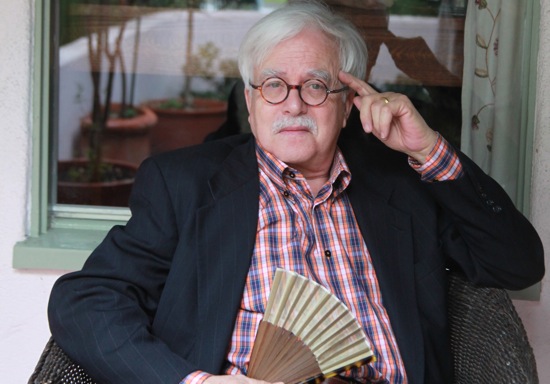

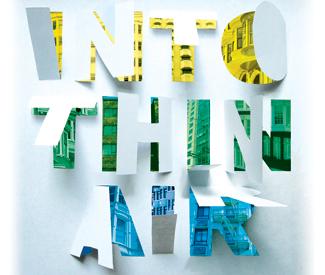

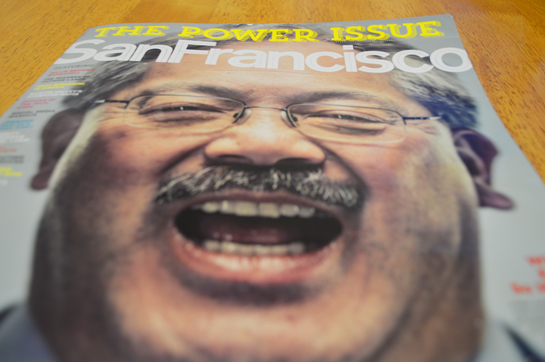
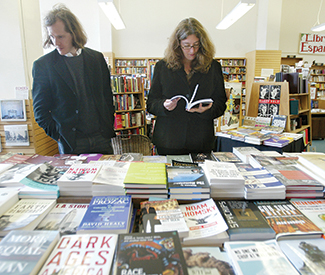

 The problem goes beyond seniors. The report found that one in four San Franciscans lacks sufficient resources to purchase nutritious food, causing many to turn to food pantries for assistance.
The problem goes beyond seniors. The report found that one in four San Franciscans lacks sufficient resources to purchase nutritious food, causing many to turn to food pantries for assistance.